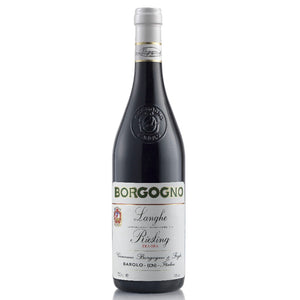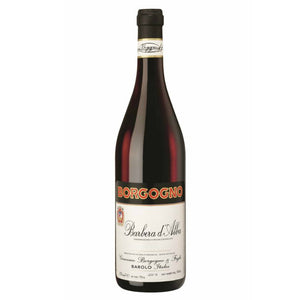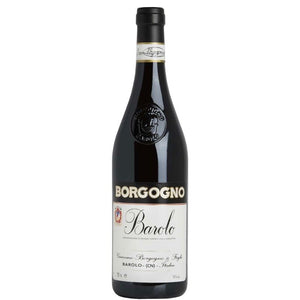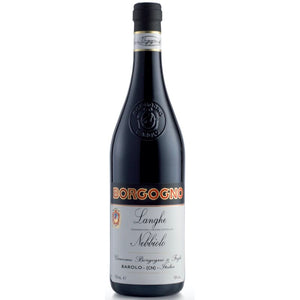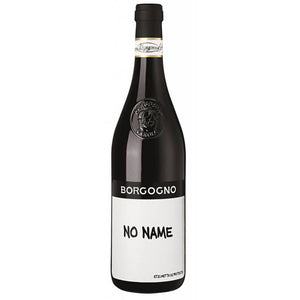
Giacomo Borgogno & Figli
When a tourist touring the Piedmont wine region approaches the village of Barolo, attention is drawn to the winery built on the top of the hill. It is the only winery whose entire production takes place in the village of Barolo, with the cellars extending many meters underground. The farm is Cantina Borgogno, founded in 1761 by Bartolomeo Borgogno, Piedmont's oldest and one of the most prestigious wine producers. Borgogno's story is strongly linked to the history of Italy and the 19th century, when the country was milled into its present form. A document from 1848 says that the king's army asked Borgogno to make wine for them from the next year's harvest. The house wine was also used in 1861 at an official gala dinner organized in honor of the Risorgimento, the unification of Italy. It is known that the Russian Tsar Nicholas II was also entertained at the house when he visited the estate in 1866. The fact that Borgogno's wines have always been praised for their top quality and elegance faithful to their origin speaks volumes for their appreciation.
Where does the multidimensionality and nuanced layering of Borgogno wines come from? Let's start with grapes. They grow in the best and most prestigious vineyards of the Barolo region in Cannubi, Liste, Fossati, Cannubi San Lorenzo and San Pietro Delle Viole. The conditions of the orchards, the variability of the terrain, the amount of precipitation, the temperatures and the exposure of the sunlight to the vines are ideal for quality-focused viticulture. Living soil also plays an important role. The clayey and limestone-rich merkel gives the growing vines just the right amount of moisture and nutrients. Other vegetation growing freely in vineyards creates a diverse and rich growth environment for the vines. However, nature and growing conditions alone do not produce top wines from grapes - experience, knowledge and skillful hands are also needed.
As everywhere in Italy, traditions and craftsmanship are respected in Piedmont. Borgogno's vineyards are worked in an environmentally friendly manner and under natural conditions. The vines are cut and thinned by hand and no artificial fertilizers or pesticides are used in the nurseries. The conversion to organic production began in 2015, and in 2019 all vineyards received an organic certificate. In total, there are 52 hectares of own vineyards in three different areas, and grapes are not bought from outside farmers. In addition to red wines, the selection includes white wines made from Riesling and Timorasso, a couple of different Chinatos and various grappas.
When the crop has been harvested in the fall and transported to the farm, the stalks are separated from the bunches. After that, the grape pulp is allowed to macerate for a long time, up to 40 days. Since 2013, the actual fermentation has taken place in glazed concrete tanks and takes about 15 days. All wines ferment spontaneously and malolactic fermentation, which softens the characteristics of the wines, lasts until February. The wines are then allowed to mature in large Slavonian, Austrian and French oak barrels. The smallest barrel found in the cellars is 2200 liters, so there are no barriques in the cellars of this farm. Barolo is aged for at least 4 years before release and is a blend of grapes from 7 different vineyards. Barolo Riserva wines mature for at least 5 years. Barolos are never filtered, but the wines are allowed to settle for 2 months in steel or cement tanks before bottling. Most of the time, Barolos enter the market a year later than the wines of other farms that produce similar wines.
Borgogno operated as a family business for no less than 247 years. From the point of view of winemaking, the most turning year in Borgogno's history must have been 1920, when Cesare Borgogno, the youngest of a family of five, took over the management of the house. Cesare was a passionate innovator whose influence can still be seen in Borgogno's quality innovations and operations, as well as the extent of the export market. Visitors to Borgogno's farm can still see the truck used by Cesare in the farm's parking garage. One of the cornerstones of the house's wine philosophy is still the practice started by Cesare, according to which some of the wines from the best vintages are transferred to the cellar to develop for decades, until their properties are at their best. Cellared wines form a unique Barolo collection, the gems of which are coveted by wine enthusiasts and collectors. The oldest vintage on sale today is 1961. In English, these collection wines are called library wines .
In 1967, the estate changed its name to Giacomo Borgogno e Figli after INAO accused the estate of being too close to the name of the French Bourgogne wine region. The farm was owned by the Borgogno family for five generations, but the owner family changed through marriage, as Cesare himself had no heirs. For a few decades, the farm belonged to the Boschis family, who luckily decided to keep the Borgogno name. In 2008, the winery was sold to the Farinetti family, which also owns Eataly. The current winemakers Andrea Farinetti and Beppe Caviola are committed to nurturing the wine philosophy and house traditions of Cesare Borgogno and his descendants by producing top quality wines. The tangible proof of this is how each vintage strongly reflects its origin, as well as the traditions and history of the region.
Borgogno's annual production is around 230,000 bottles.

